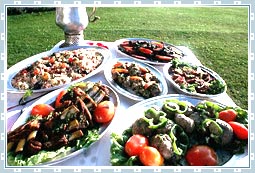Apple is the most important temperate fruit of the northwestern Himalayan region in India. It is predominantly grown in Jammu and Kashmir, Himachal Pradesh and hills of Uttar Pradesh, accounting for about 90% of the total production. Its cultivation has also been extended to Arunachal Pradesh, Sikkim, Nagaland, and Meghalaya in north-eastern region and Nilgiri hills in Tamil Nadu. The agro climatic conditions in these states are not as conducive as in north-western Himalayan region. Early and continuous rains from April onwards do not favour the production of quality fruits besides resulting in high incidence of diseases.
The apple-growing areas in India do not fall in the temperate zone of the world but the prevailing temperate climate of the region is primarily due to snow covered Himalayan ranges and high altitude which helps meet the chilling requirement during winter season extending from mid-December to mid-March.
CLIMATE AND SOIL
Most of the apple varieties require 1,000-1,500 hours of chilling below 7 C during winter to break the rest period. These conditions are available at an elevation of 1,500-2,700 m above mean sea-level in the Himalaya ranges. By and large, the average, the average summer temperature should be around 21 -24 C during active growth period. The areas with frost-free spring and adequate sunshine during summer without wide fluctuations in temperature are most suitable for apple cultivation. Low temperature, rains and cloudy weather, during flowering period hamper the bee activity, affecting cross pollination adversely. Areas exposed to high winds particularly the hill tops are also not suitable for its cultivation. Dry winds during summer desiccate flowers and hamper bee activity, resulting in poor fruit set. Inclement weather, particularly low temperature below 15 C during bloom restricts the bee activity which is completely inhibited below 4.4 C, affecting fruit set. Fully opened blossoms may be killed at temperatures below-2.2 C. The optimal temperature for pollen germination and fruit setting is 21.1-26.7 C





 02:11
02:11
 sirenagar-kashmir
sirenagar-kashmir



